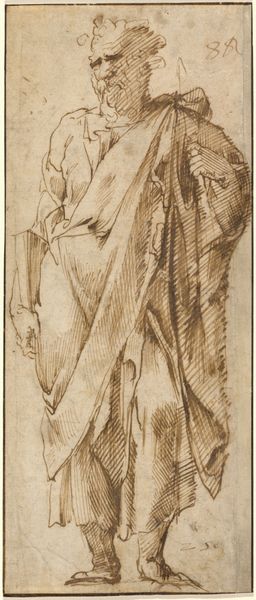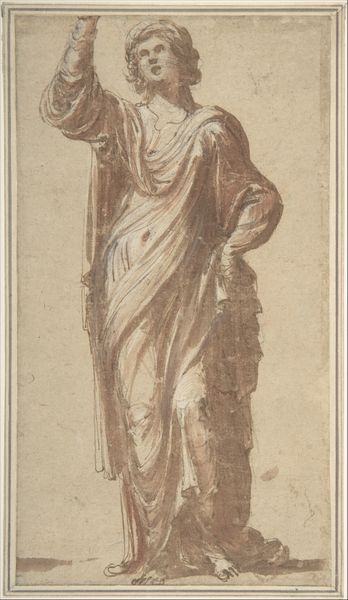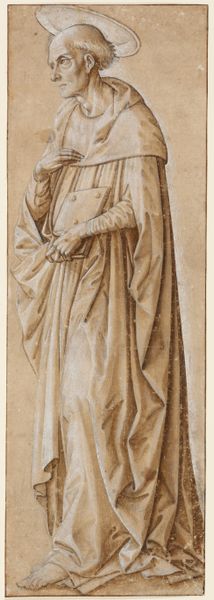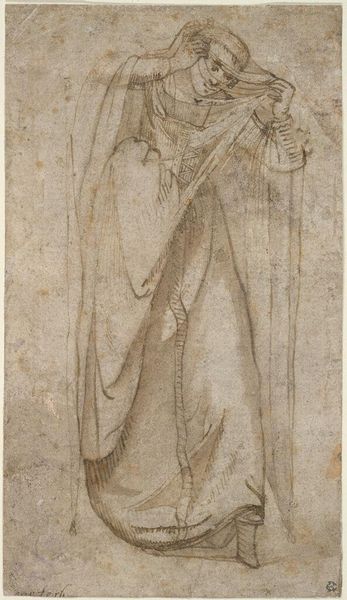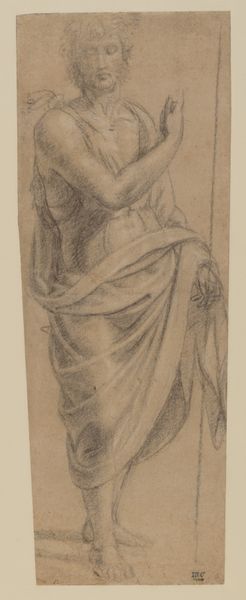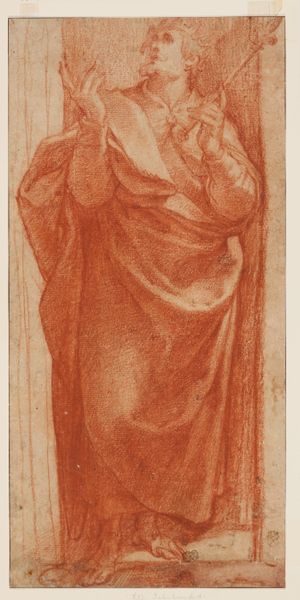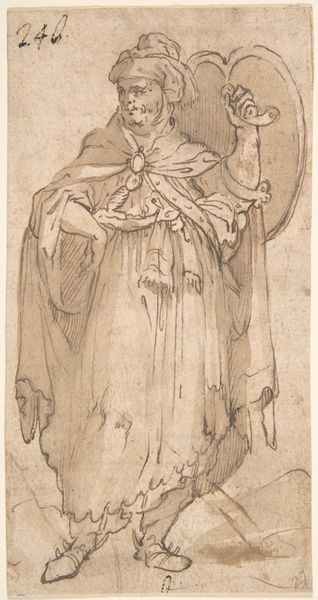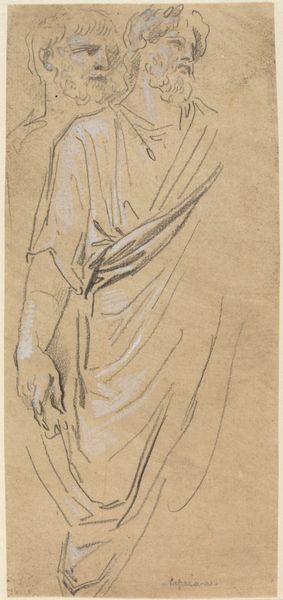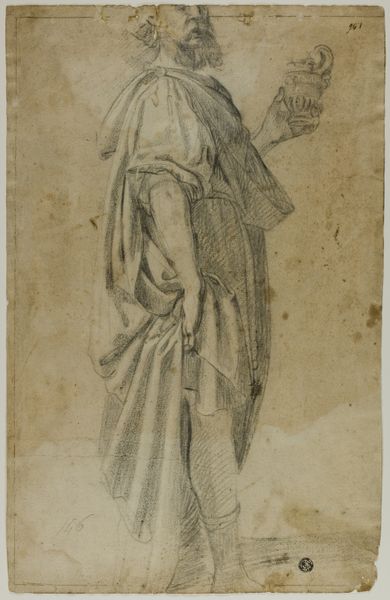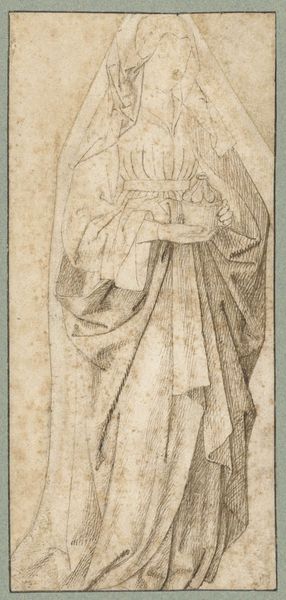
drawing, print, paper, ink, pencil, graphite, pen
#
drawing
#
neoclacissism
# print
#
classical-realism
#
paper
#
ink
#
pencil drawing
#
coloured pencil
#
pencil
#
graphite
#
pen
#
history-painting
Dimensions: 151 × 58 mm
Copyright: Public Domain
Editor: So, here we have Thomas Stothard's "Athena, or Britannia identified as Athena," a pen, pencil, and graphite drawing on paper. The figure is imposing, but also oddly ethereal in the soft pencil strokes. What do you make of this classical depiction? Curator: Well, immediately, I think of the historical context: this piece reflects the Neoclassical fascination with ancient Greece and Rome, but it also speaks to the way empires often appropriated classical imagery to legitimize their power. Notice how Athena, the goddess of wisdom and warfare, is presented. Do you think this is purely an artistic choice, or something more deliberate? Editor: I hadn't really considered that. I guess seeing her represented this way – almost stoic – it seems like less a celebration of feminine strength and more about projecting an image of unyielding authority. Curator: Precisely. Think about the era in which Stothard was working. Britannia, the female personification of Great Britain, frequently borrowed from the iconography of Athena. It raises questions about how gender and power were intertwined in the visual rhetoric of the time. Who benefits from associating a nation with these very specific feminine ideals? Editor: So, the "Athena" identification isn't just a stylistic choice, but a deliberate commentary on British imperial power and gender roles. Interesting! It kind of subverts my initial perception of classical beauty. Curator: It’s more than just beauty; it’s about understanding how these images were and are still used to reinforce certain ideologies. Does understanding that change how you view the drawing now? Editor: Definitely. It gives the image a whole new layer of meaning to consider. Curator: Exactly. And that’s why considering the historical and social context is crucial. It opens up possibilities for thinking about the art in new ways.
Comments
No comments
Be the first to comment and join the conversation on the ultimate creative platform.
